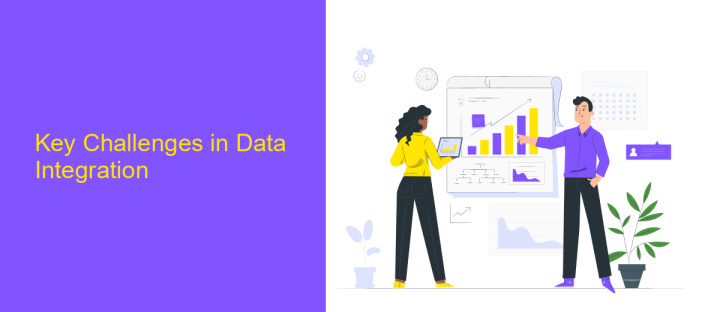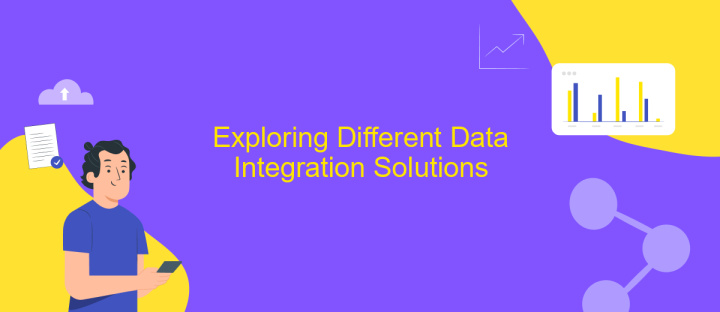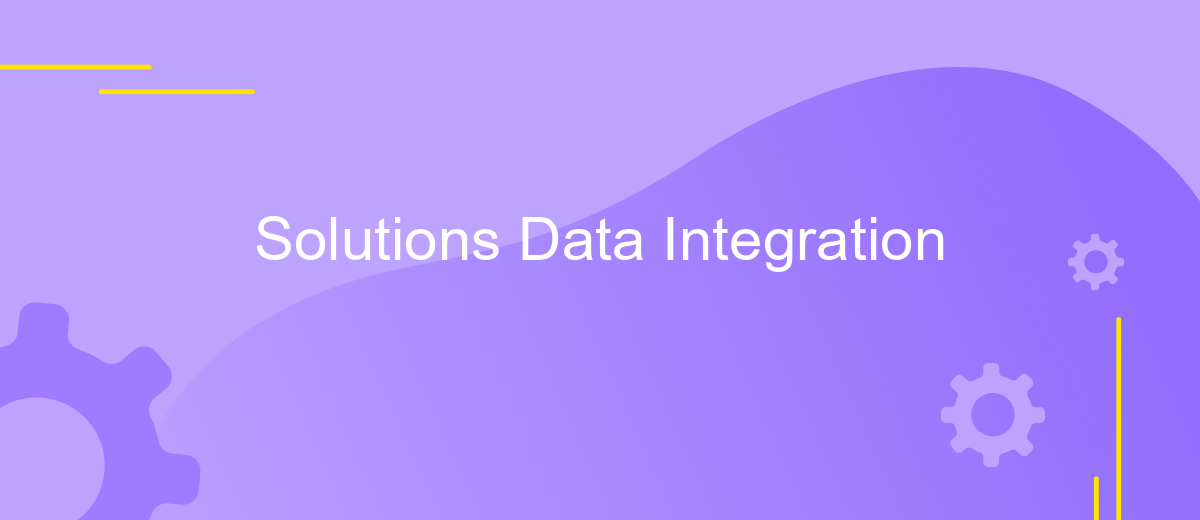Solutions Data Integration
In today's fast-paced digital landscape, effective data integration is crucial for businesses seeking to harness the full potential of their information assets. Solutions Data Integration offers a comprehensive approach to seamlessly merging disparate data sources, enabling organizations to drive informed decision-making and optimize operations. By breaking down data silos and ensuring real-time accessibility, these solutions empower businesses to stay competitive and agile in an ever-evolving market.
Understanding the Importance of Solutions Data Integration
In today's fast-paced digital landscape, the integration of solutions data is crucial for businesses aiming to stay competitive and efficient. By seamlessly connecting disparate data systems, organizations can streamline operations, enhance decision-making processes, and foster innovation. Effective data integration ensures that all relevant information is accessible, reliable, and up-to-date, enabling businesses to respond swiftly to market changes and customer demands.
- Improved data consistency and accuracy across platforms.
- Enhanced collaboration and communication among departments.
- Increased operational efficiency and reduced redundancy.
Ultimately, solutions data integration is not just about technology—it's a strategic approach to harnessing the full potential of data. By breaking down silos and ensuring seamless data flow, businesses can gain a holistic view of their operations, uncover valuable insights, and drive growth. As the volume and complexity of data continue to rise, the importance of robust data integration solutions will only grow, making it a vital component of any successful business strategy.
Key Challenges in Data Integration

Data integration presents several key challenges that organizations must navigate to effectively manage and utilize their data. One significant challenge is the heterogeneity of data sources. Organizations often deal with a variety of data formats, structures, and sources, including legacy systems, cloud-based applications, and external databases. This diversity makes it difficult to create a unified view of data, requiring sophisticated tools and strategies to harmonize disparate data sets into a cohesive whole.
Another major challenge lies in ensuring data quality and consistency across integrated systems. Inconsistent data can lead to inaccurate insights and decisions, undermining the value of integration efforts. Additionally, data integration processes must be scalable to handle increasing volumes of data as organizations grow. Services like ApiX-Drive can assist by automating the integration process, reducing manual effort, and ensuring that data flows seamlessly between systems. ApiX-Drive offers a user-friendly interface that simplifies the setup and management of integrations, making it easier for organizations to maintain data accuracy and streamline their operations.
Exploring Different Data Integration Solutions

Data integration is a crucial aspect of modern business operations, enabling seamless interaction between disparate systems and improving data accessibility. As organizations strive to harness data-driven insights, exploring various data integration solutions becomes essential. Each solution offers unique features, catering to different business needs and technological environments.
- ETL Tools: Extract, Transform, Load (ETL) tools are traditional solutions that facilitate data movement and transformation from multiple sources to a centralized data warehouse.
- iPaaS: Integration Platform as a Service (iPaaS) solutions provide cloud-based integration capabilities, allowing businesses to connect applications and data across hybrid environments.
- Data Virtualization: This approach creates a virtual data layer, enabling real-time access and integration of data without physical movement, enhancing agility and reducing complexity.
- API Management: APIs allow applications to communicate, and managing these interfaces ensures secure and scalable data exchange between systems.
Choosing the right data integration solution depends on factors such as data volume, complexity, and organizational goals. By evaluating these options, businesses can implement a strategy that not only meets their current needs but also scales with future growth. A well-chosen integration solution empowers organizations to unlock the full potential of their data, driving innovation and informed decision-making.
Best Practices for Successful Data Integration

Effective data integration is crucial for organizations aiming to harness the full potential of their data assets. By seamlessly combining data from various sources, businesses can gain comprehensive insights that drive informed decision-making. To achieve successful data integration, it is essential to follow best practices that ensure data consistency, accuracy, and accessibility.
One of the key considerations in data integration is the establishment of a clear strategy that aligns with organizational goals. This involves understanding the data landscape, identifying key data sources, and determining the integration methods that best suit the organization's needs. Additionally, maintaining data quality and security throughout the integration process is paramount.
- Define clear objectives and requirements for data integration projects.
- Utilize robust data integration tools and technologies.
- Ensure data quality by implementing validation and cleansing processes.
- Maintain data security and compliance with relevant regulations.
- Foster collaboration between IT and business teams for seamless integration.
By adhering to these best practices, organizations can ensure a smooth and efficient data integration process. This not only enhances data reliability and accessibility but also empowers organizations to leverage their data for strategic advantage, ultimately driving business growth and innovation.
Future Trends in Data Integration
As we look to the future of data integration, the rise of artificial intelligence and machine learning is set to revolutionize the landscape. These technologies are enabling more sophisticated data processing and analysis, allowing businesses to gain deeper insights and make informed decisions more rapidly. Automation will play a crucial role, reducing the need for manual intervention and minimizing errors, thus enhancing efficiency and reliability in data integration processes.
In addition, the demand for real-time data integration is growing, driven by the need for immediate access to information across various platforms. Solutions like ApiX-Drive are leading the charge by providing seamless integration services that connect disparate systems with minimal effort. This trend towards low-code or no-code integration platforms empowers non-technical users to set up and manage integrations, democratizing data access and utilization. As these technologies continue to evolve, they will pave the way for more agile and responsive business environments.
FAQ
What is data integration and why is it important?
How can I ensure my data integration process is efficient?
What are the common challenges in data integration?
How can automation help in data integration?
What should I consider when choosing a data integration tool?
Apix-Drive will help optimize business processes, save you from a lot of routine tasks and unnecessary costs for automation, attracting additional specialists. Try setting up a free test connection with ApiX-Drive and see for yourself. Now you have to think about where to invest the freed time and money!

